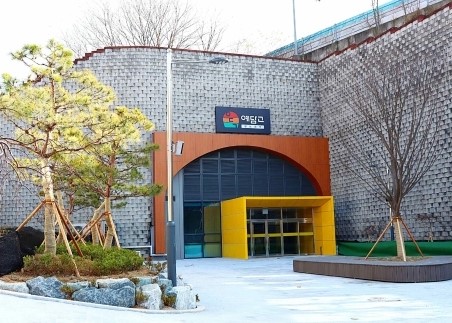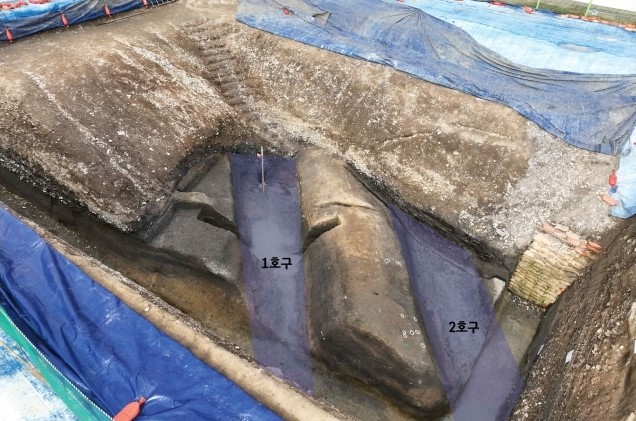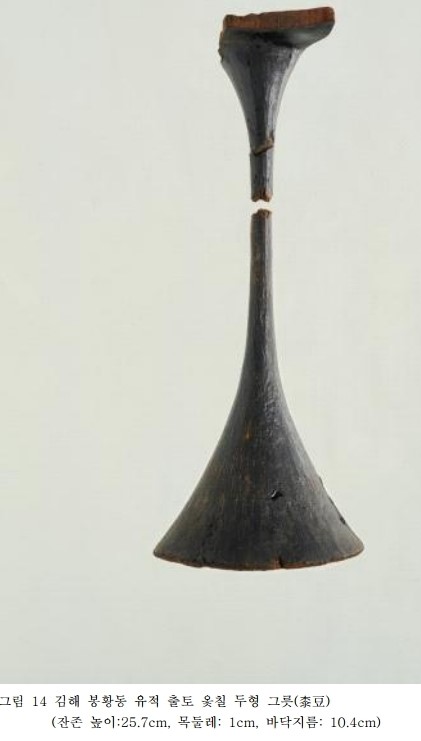New Gaya Discoveries Brought to Life in a Multifunctional Cultural Space Inside a Tunnel
The Korea Heritage Service (Administrator: Choi Eung-chon; hereafter the KHS) recently discovered fifteen high-quality lacquered ritual vessels (long-necked lacquered mounted vessels) symbolizing the power of leader of the Byeonhan Confederacy in the first century during the tenth excavation (2024) at the Archaeological Site in Bonghwang-dong, Gimhae. The excavations were part of a project launched in 2015 to identify remains from the capital city of the Geumgwan Gaya polity. These artifacts will be unveiled on March 24 at the new “Yedamgo” for the Gyeongsang-do Province region, a space dedicated to education on and the preservation, management, exhibition, and experience of non-state-owned artifacts. It will open in Mogok Tunnel in Haman on the same day.
*Non-state-owned artifacts: Excavated items that have not yet been designated as state-owned cultural heritage *Yedamgo: A historical and cultural space for excavated artifacts, meaning ‘a place where the present embraces the past.’
The Archaeological Site in Bonghwang-dong, Gimhae: Identifying the Center of the Geumgwan Gaya, Which Succeeded the Byeonhan Confederacy
The artifacts were excavated by the Gaya National Research Institute of Cultural Heritage (Director: Oh Chun-yeong), an affiliate of the National Research Institute of Cultural Heritage under the KHS. The items were found within a 70-centimer organic layer alongside the remains of a ditch (gusang yugu) that confirmed the presence of a large-scale settlement. Despite the relatively small excavation area of 109 square meters, more than 300 wooden artifacts were unearthed, including high-quality lacquered wooden vessels produced and used from the first to fourth centuries.
*Gusang yugu: Remains of a drainage channel or other form of ditch. Theycould also serve as a defensive moat (hwanho) or a boundary marker (hwangu).
The fifteen lacquered vessels(long-necked lacquered mounted vessels) feature a neck measuring one centimeter in diameter, which is notably more slender and refined than the three-to-four-centimeter diameter necks observed in previously excavated items. Additionally, traces of being affixed to a lathe are found on the base of the vessels, indicating that (albeit in its early stage) a turning technique for creating wooden vessels existed since at least the period of the Byeonhan Confederacy. This provides valuable insight into the woodworking traditions that continued through later periods.
In addition to these lacquered vessels, the excavation yielded a diverse array of living remains, including: fifteen lacquered items, such as sheath-shaped wooden vessels, cylindrical containers, and lids; bird-shaped wooden objects; everyday wooden utensils, such as rice paddles, bowls, and cups; textile-related components, possibly from a loom; and agricultural tools, including an adze. Furthermore, oracle bones believed to have been used for divination and small clay items were discovered, providing glimpses into the ritual practices of the Byeonhan Confederacy.
One particularly notable finding is the large quantity of lacquerware (long-necked lacquered mounted vessels), which has previously been thought to exclusively be burial goods for high-status tombs, recovered from the ruins of living spaces. This reinforces the notion that the Archaeological Site in Bonghwang-dong was already a large-scale settlement by the first century. The findings further suggest that the site evolved from the dwelling of a Byeonhan chieftain into the central royal precinct of Geumgwan Gaya as it solidified its position as the heart of the polity.
Telling the Stories of Excavated Artifacts in a Former Tunnel: Opening a Yedamgo for the Gyeongsang-do Province Region Since 2021, the KHS and the Korean Cultural Heritage Association (President: Kim Chang-eok) have been spearheading the establishment of what they have termed ‘Yedamgo’ facilities. Going beyond simple storage and management spaces for artifacts or venues for educational or experiential programs, it is hoped that the Yedamgo will function as ‘cultural stations’ where the historical value of non-state-owned items can be explored and maximized. These spaces can function as their next destination before potential state designation. Additionally, Yedamgo will serve as storytelling spaces that present the overall journeys of artifacts—from excavation and research to exhibition and education. They are designed to provide a platform where heritage can be actively utilized and shared. *Current Yedamgo facilities: Chungcheong-do Province region (Sajinpo Tunnel in Daejeon; opened March 2023), Jeolla-do Province region (Silli Tunnel in Jeonju; opened October 2023), Maritime region (Cheonghaesa Dorm in Mokpo; opened December 2024), Gyeongsang-do Province region (Mogok Tunnel in Haman; scheduled for opening in March 2025), the metropolitan and Gangwon-do Province region (planned for opening in either 2027 or 2028)
The Yedamgo for the Gyeongsang-do Province region is set to open on March 24. It repurposes Mogok Tunnel in Haman, which was no longer in use, transforming it into a space for the exhibition and utilization of the region’s cultural heritage. As the Haman area was once the center of Ara Gaya, a polity that flourished through ironworking and trade, this Yedamgo is expected to establish itself as a historical and cultural attraction in the region.
The Yedamgo for the Gyeongsang-do Province region will house and exhibit over 1,700 boxes of excavated artifacts from across the region, operating alongside an open-storage facility. To commemorate its inauguration on March 24, a special exhibition introducing key artifacts that illuminate the culture of the Gaya Confederacy in the Haman region will be presented.
The exhibition will showcase over 100 items excavated from key Ara Gaya heritage sites, including the Archaeological Site in Gaya-ri in Haman, the palace site of Ara Gaya, the Ancient Tombs on Marisan Mountain in Haman (the burial grounds for Ara Gaya’s nobility), and the Archaeological Site in Ugeo-ri in Haman, an Ara Gaya kiln site.
Additionally, visitors can explore a permanent exhibition entitled Trowel: Those Who First Encounter the Past, which highlights the stories of archaeologists and researchers who uncover and study historical treasures.
For further details regarding the opening ceremony of the Yedamgo for the Gyeongsang-do Province region, please contact Archaeological Policy Division of the KHS (042-481-3144) or the Korean Cultural Heritage Association (042-384-1552). For details and inquiries related to the press conference on the excavated artifacts, please contact the Gaya National Research Institute of Cultural Heritage (055-328-0915).
The KHS will continue to actively preserve, research, and utilize national heritage as living cultural assets that integrate into everyday life and practice proactive administration to ensure that the legacy of this history is kept alive.










